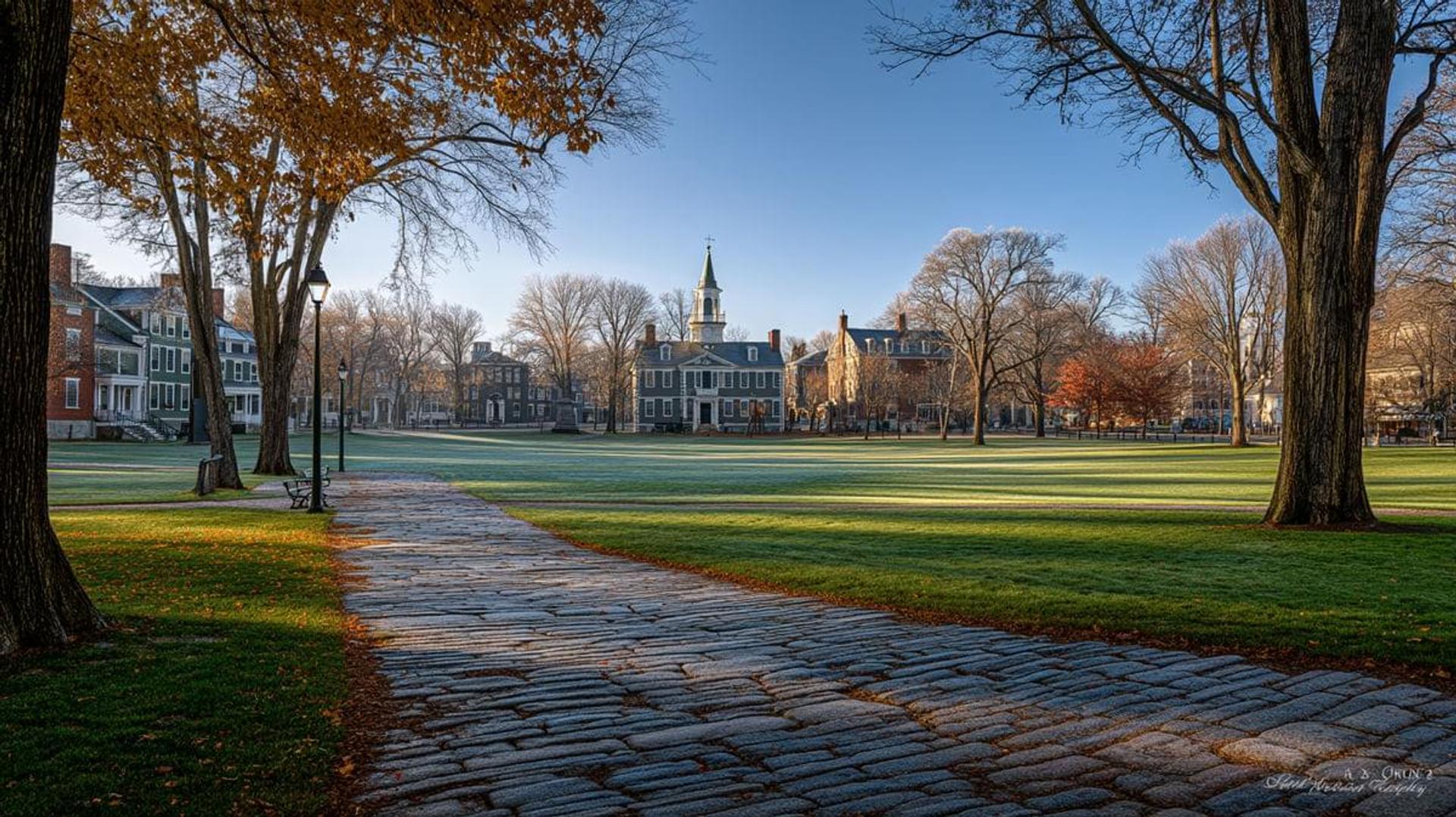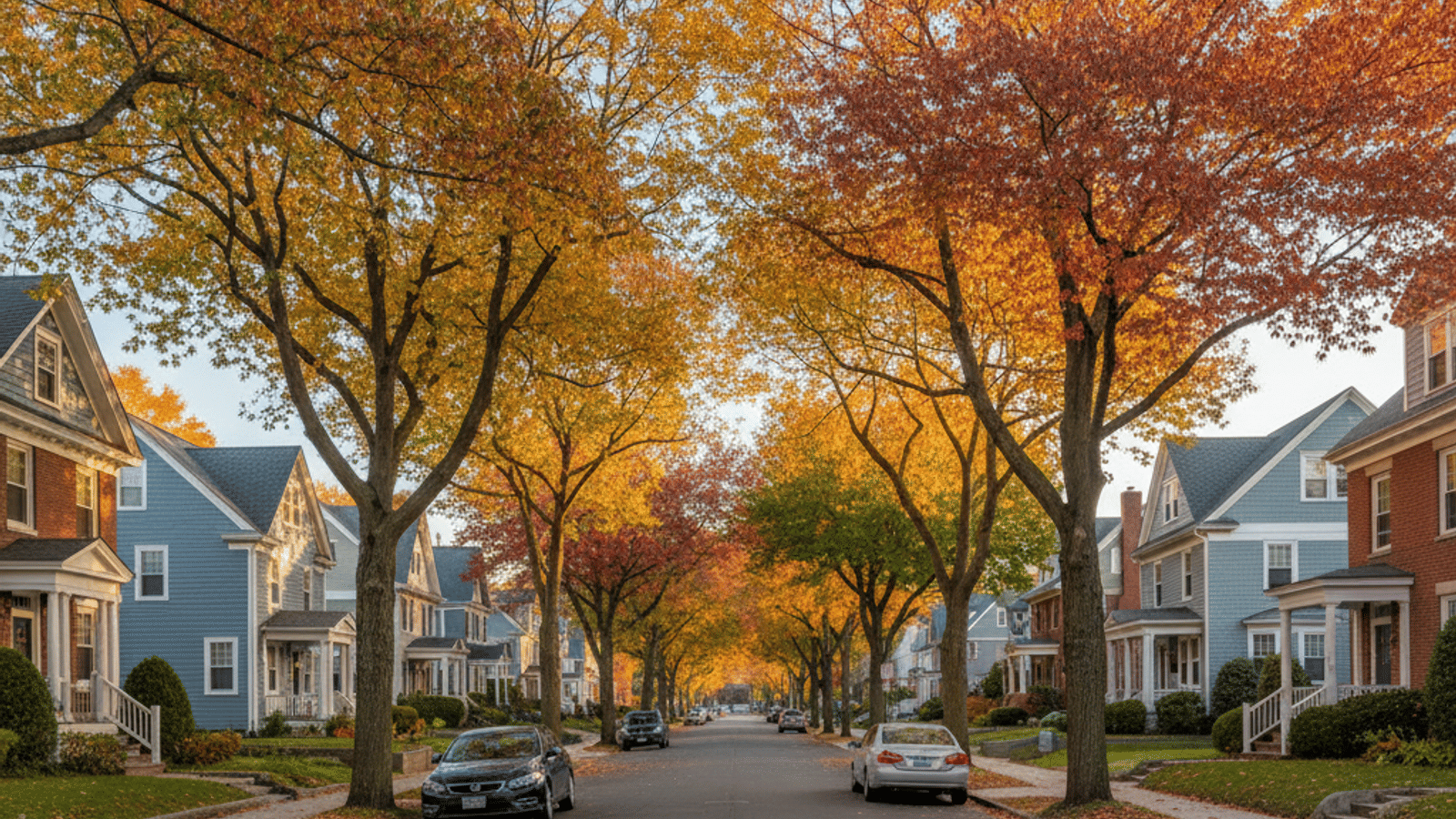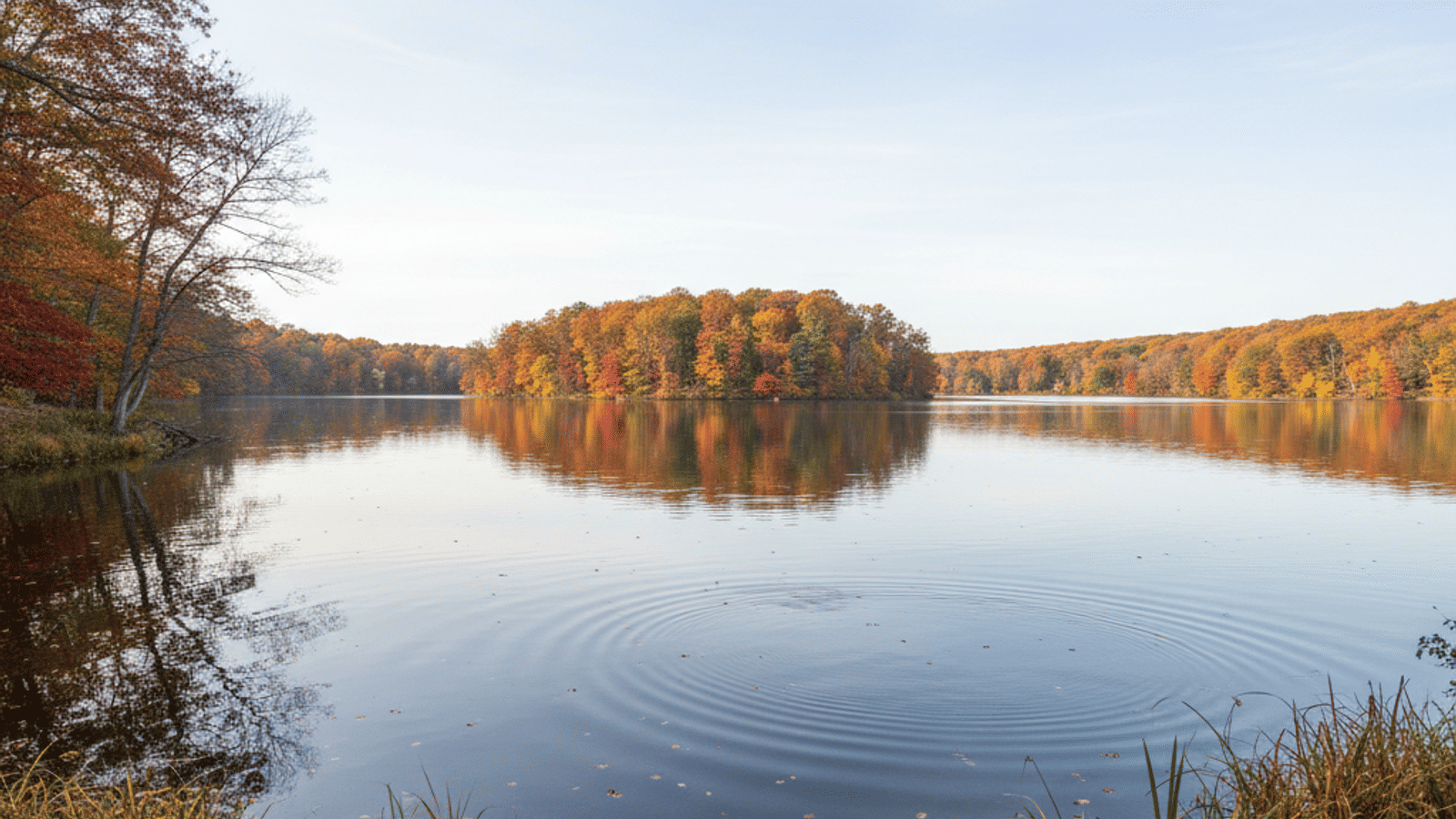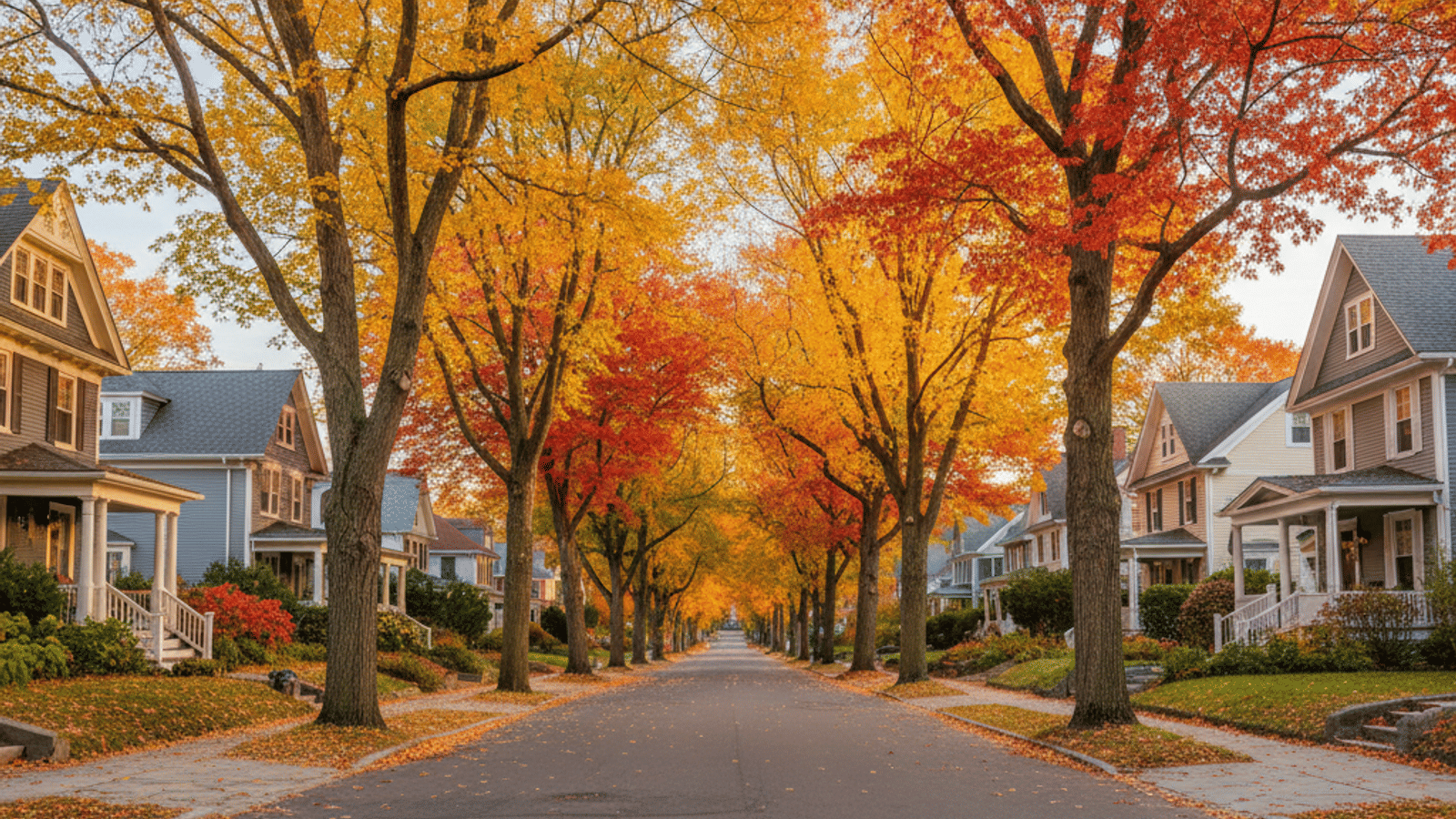Introduction to Life in Lexington
Town Overview
The Town of Lexington sits just thirteen miles northwest of Downtown Boston, yet it feels worlds away once you roll past the farms and stone walls that line Massachusetts Avenue.
Lexington is in Middlesex County, and it’s famously known as the “birthplace of American Liberty,” a title earned when the first shots of the American Revolutionary War rang out on the Lexington Battle Green in 1775.
Spend a Saturday morning walking across that landmark, officially known as Lexington Common, and you’ll see reenactment groups drilling in period garb, tourists chasing selfies, and locals sliding coffee lids back before the farmers’ market opens.
It’s a small-town rhythm that draws folks who crave New England charm without losing touch with the Boston area.
Who This Guide Is For
Whether you’re considering a move, already hunting for homes for sale in Lexington, or you’re a lifetime resident scouting a new neighborhood, this guide shares the things to know before moving.
We’ll cover the cost of living, Lexington real estate trends, schools in Lexington, and the recreation scene that keeps everyone outside once the snow melts.
Quick Snapshot of Lifestyle
Lexington offers a rare blend: colonial-era homes with low roofs and raised basements along Massachusetts Avenue, single-family homes on quiet cul-de-sacs, and fresh townhouses tucked behind Lexington Centre’s boutiques.
You’ll hear “Lexington boasts top schools” in every open-house chat, and it’s true. Lexington High School is the fourth-best high school in Massachusetts according to U.S. News.
History and Heritage
Lexington’s Role in the American Revolution
The Battles of Lexington and Concord kicked off the fight for independence on April 19, 1775. Minute Man National Historical Park stretches from town into nearby Concord, preserving walking trail segments where colonial militia met British Regulars.
The atmosphere is thick with historical significance; many locals treat Patriots’ Day like a spiritual holiday, rising before dawn for the annual reenactment on the Battle Green.
Must-See Historic Sites and Landmarks
You can’t skip Buckman Tavern, the 1710 watering hole where militia waited for the British column to appear.
Munroe Tavern down the street served as a field hospital after the skirmish, while the Hancock-Clarke House still tells the story of Paul Revere’s midnight ride.
Each site forms part of the Lexington Arts and Historical Society’s passport program—finish it and you’ll swear you majored in the American Revolution.
How Lexington's Rich History Shapes Daily Life
Living here means you’ll routinely zig-zag cyclists clad in tri-corner hats, watch schoolkids rehearse for April’s reenactment, and hear neighbors debate which lawn best frames the giant American Liberty banner.
Lexington may lean tech-savvy thanks to proximity to the Massachusetts Institute of Technology, yet the town’s rich history of Lexington permeates modern decisions, from Colonial-style signage rules to preservation grants for landmark houses.
Cost of Living and Housing Market
Cost of Living in Lexington
The cost of living in Lexington runs high at about $2,777 per month on average, placing it in the top five percent of U.S. cities.
Average Home Prices in Lexington
Median list price hit $2.3 million in June 2025, says Realtor.com, while Zillow pegs the average home value at $1.62 million.
Colonial-era homes with meticulously restored clapboards often command premiums, but even mid-century ranches go pending fast.
Inventory, Competition, and Timing
Homes for sale in Lexington spend roughly eight days on the market and often draw multiple offers above asking.
Spring is the sweet spot before summer vacations drain buyer traffic. Local agents joke that Lexington has one of the most “no-sleep” spring markets in Massachusetts.
Popular Neighborhoods in Lexington
Lexington Center and Lexington Centre buzz with café chatter, while Munroe Hill shows off Victorian flair.
Lincoln Park and the adjacent Lexington Street in the Lakeview corridor are popular with families craving bigger yards near coveted playgrounds.
On the north side, Burlington line streets feel more suburban but still offer quick hops to Burlington Mall for retail therapy.
Rental Market Snapshot
Inventory skews toward owner-occupied single-family homes, so renters often hunt townhouses or accessory units.
Expect one-bedroom apartments around $2,400 and three-bedroom homes cresting $4,000, depending on finish level and walkability to Downtown Lexington.
Property Taxes
Fiscal Year 2025 residential tax rate in Lexington sits at $12.23 per $1,000 of assessed value, per the Town’s finance office.
That means an average-priced home in Lexington faces a bill north of $18,000, a line item every buyer should factor into their cost of living index checklist.
Schools and Education
Lexington Public Schools Overview
Lexington Public consistently ranks among the best places to live in Massachusetts for academics.
Lexington High School’s AP slate feels like a mini college catalog, and the district’s innovative Lexington Arts integration pairs STEM with studio projects.
Elementary campuses sprawl across green spaces so kids can sprint from math to monkey bars.
Private and Parochial Options
Beyond Lexington Christian Academy’s tight-knit college-prep vibe, families eye regional standouts like the International School of Boston or Middlesex Community College’s dual-enrollment tracks.
Homeschool pods often meet at the Lexington Community Center, proof that education here bends to family preference.
Parks and Outdoor Recreation
Town Commons, Green Spaces, and Playgrounds
Known as Lexington Common, the Battle Green doubles as communal lawn and history lesson.
Center Recreation Complex hosts baseball under summer lights, while Hastings Park lights up with food trucks during events throughout the year.
Kids burn off steam at Lincoln Park’s modern playground before parents rack up laps on the walking trail encircling the athletic fields.
Conservation Lands and Trails
Nature fans weave along the eleven-mile Minuteman bikeway that slices through town and beyond.
Minute Man National Historical Park offers shaded paths, bird-watching, and the chance to retrace militia footfalls.
ACROSS Lexington routes link pocket green spaces so you can stitch together your own 10-k route without leaving tree cover.
Dining, Shopping, and Entertainment
Local Restaurants and Cafés in Lexington Center
Start your food crawl on Massachusetts Avenue with brunch at Revival Cafe + Kitchen. The Lexington outpost still pulls espresso every day until 4 p.m., and their maple-sage breakfast sandwich keeps the bike-to-work crowd honest.
Two blocks north, Sweet Thyme Bakery turns out almond croissants so flaky they snow on your lap; the shop is very much alive and baking Wednesday through Sunday afternoons.
When dinner rolls around, locals split between the white-tablecloth calm of Town Meeting Bistro—think seared scallops and a porch that hums on summer nights—and the high-energy tap-wall at Revolution Hall, where you can pour your own pilsner before crushing a short-rib taco.
Craving heat? Slide into a booth at Love at First Bite Thai Kitchen & Bar for basil-fried rice that lands with a sweet-chili kick; the kitchen is open seven days a week and runs late enough to catch the post-Little-League crowd.
Boutiques, Grocers, and Essentials
Lexington Centre’s retail therapy starts at Wilson Farm, a fifth-generation farmstand on Pleasant Street that stays open until 7 p.m. for last-minute basil or a “need-it-now” pie.
For a quick wardrobe refresh, locals hop a mile over the town line to Helena’s, a women’s clothing shop that curates New-England-casual staples without sticker shock.
If you’re hunting quirky gifts, handmade jewelry, or a dress that won’t twin with anyone at Hastings Park, pop into The Dragonfly Boutique. The owner restocks weekly, so the window display rarely looks the same two Saturdays in a row.
Nightlife, Entertainment, and Weekend Fun
Lexington keeps its fun low-key and close-to-home. The restored two-screen Lexington Venue still lights up the marquee with first-run films and indie flicks, plus you can rent the whole place for Mario Kart showdowns on the big screen.
A five-minute stroll south drops you at Cary Hall, where the calendar flips from ukulele virtuosos to comedy nights to the Lexington Symphony’s annual holiday concert—tickets rarely top forty bucks, so locals treat it like their living-room stage.
When you want genuine nightlife vibes, a quick cruise up Route 3 drops you at Goodnight Johnny’s in Burlington, a live-music bar that keeps the taps flowing until midnight on weekends and books Beatles-vinyl nights that feel more house party than suburban strip-mall bar.
Arts, Culture, and Community
Museums, Galleries, and Performance Venues
Munroe Center for the Arts fills old classrooms with pottery wheels, oil-paint palettes, and the echo of violin practice. Buckman Tavern hosts colonial story hours, while the Lexington Historical Society schedules lecture series on American Revolutionary War scholarship.
Annual Festivals and Town Traditions
Patriots’ Day reenactment steals headlines, but Lexington offers summer Shakespeare on the Common, autumn Arts on Massachusetts Avenue fair, and winter ice-sculpture strolls that turn Downtown Lexington into a frosted gallery.
Clubs, Volunteerism, and Community Groups
From garden clubs maintaining green spaces to youth robotics teams serving Lexington’s STEM pipeline, there’s a group for every passion. The Community Center buzzes with knitters, pickleball leagues, and language-exchange circles.
Transportation and Commuting
Access to Boston and Regional Hubs
A typical drive to Downtown Boston runs thirty to forty-five minutes via Route 2 and I-93. Weekend traffic can shrink that window; Red Sox game nights do the opposite.
Public Transit
The MBTA’s 62 and 76 buses ferry riders to Alewife Station for a quick T ride downtown. Commuter-rail devotees board in neighboring communities, though locals often lobby the Commonwealth of Massachusetts for a Lexington stop. Lexpress, the town-run circulator, keeps teens mobile after school.
Driving, Parking, and Major Roadways
You can nip down I-95 for a Trader Joe’s run in Burlington or merge onto Route 3 for beach days on the North Shore. Parking downtown is mostly two-hour street spots, but side-street strolls rarely top five minutes.
Cycling and Walkability
Between the bikeway and new green-painted lanes, cycling feels safer by the month. Sidewalk inventory is solid in core neighborhoods, though outer cul-de-sacs lean car-dependent.
Healthcare & Safety
Nearby Hospitals and Urgent Care
Lexington’s MinuteClinic handles sniffles; major procedures head to Lahey Hospital in Burlington or Mass General in Downtown Boston. Urgent care centers dot Waltham and Bedford for weekend mishaps.
Crime in Lexington, MA
NeighborhoodScout pegs crime at three incidents per thousand residents—well below state and national averages. Folks leave bikes unlocked at soccer practice, but standard big-city caution still applies.
Seasonal Living
What to Expect in Winter
Snow totals flirt with fifty inches, so learn the overnight parking ban schedule. The Recreation Department plows the bikeway for winter joggers, and Lexington may close schools for only the fiercest nor’easters.
Spring and Summer Events and Outdoors
Lilacs perfume Battle Green, farmers’ markets reopen, and free concerts ring out from Hastings Park gazebo. Families picnic on colonial-era cannon mounts while kids chase bubbles across green spaces.
Fall Foliage and Festivities
Maples around Lincoln Park ignite with color, cider-donut lines snake beside pumpkin patches, and the library hosts spooky storytelling about Lexington’s rich history.
Is Lexington Right for You
Key Pros and Cons
High taxes and steep home prices hurt the wallet, yet top-tier schools, walkable history, and a quick Boston commute soften the blow. Lex-pros tout the recreation menu; skeptics grumble about Route 2 rush-hour bottlenecks.
Who Thrives Here
Families craving public-school excellence, professionals telecommuting a few days a week, and history buffs who like Lexington’s daily connection to 1775 all feel at home in Lexington.
Final Takeaways and Next Steps
If you’re considering a move, tour at dawn so you’ll hear birdsong instead of traffic.
Jot down things to know before moving: property-tax bills, commuter routes, and whether colonial-era homes meet your need for modern closets.
Chat with neighbors on the Massachusetts Avenue café patios. Lexington is often one conversation away from feeling like home in Lexington.
FAQ’s About Living in Lexington
Why is Lexington considered one of the best places to live in Massachusetts?
Lexington combines award-winning schools, rich history, and proximity to Boston in a town in Massachusetts that still hosts backyard block parties. The blend of top safety rankings and active green spaces like Minute Man National Historical Park makes it a perennial “best places to live” contender in national magazines.
What’s the biggest culture shock for newcomers?
The sheer volume of American Revolution references surprises many transplants. From the “first shots” mural inside the visitor center to street banners celebrating Battles of Lexington and Concord anniversaries, history shapes everyday life. You’ll quickly learn why Battle Green reenactment practices shut down traffic.
How does the cost of living index compare to neighboring towns?
Lexington’s index sits higher than Waltham or Burlington but is similar to Newton. Housing and property taxes drive the premium, while groceries and utilities track regional averages. Knowing this gap upfront helps families budget before moving to Lexington.
Are there good programs for arts-minded kids?
Absolutely. Munroe Center for the Arts runs after-school ceramics, Lexington Public Schools stage musicals, and Lexington Arts Council funds pop-up murals along Massachusetts Avenue. Kids showcase paintings at community-center galleries each June.
What types of homes dominate the market?
Expect colonial-era homes with clapboard siding, newer single-family homes on cul-de-sacs, and a growing stock of townhouses near Lexington Center. Colonial-charm seekers prize features like low roofs, while modern buyers chase high-ceilinged new builds with raised basements for in-law suites.






